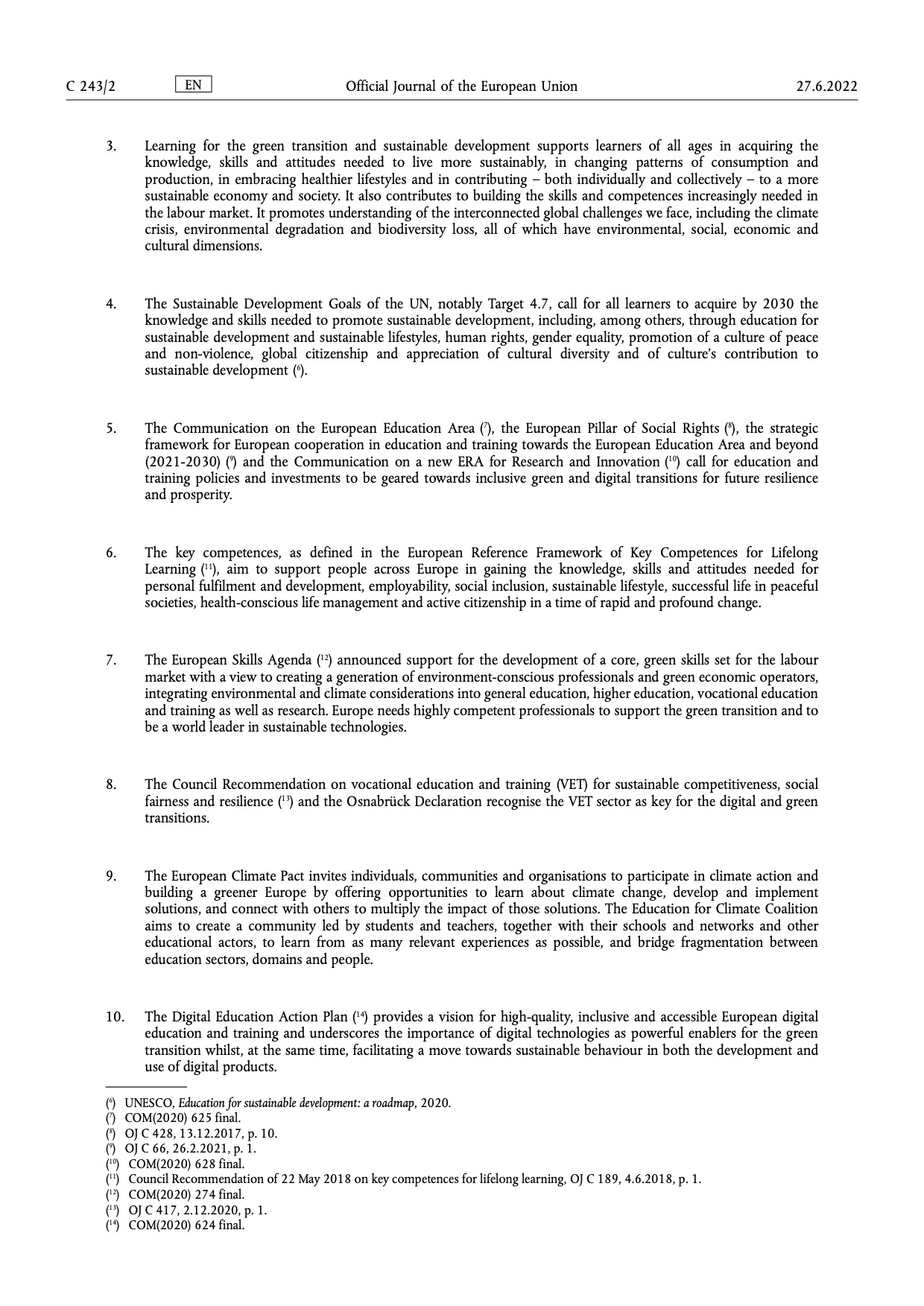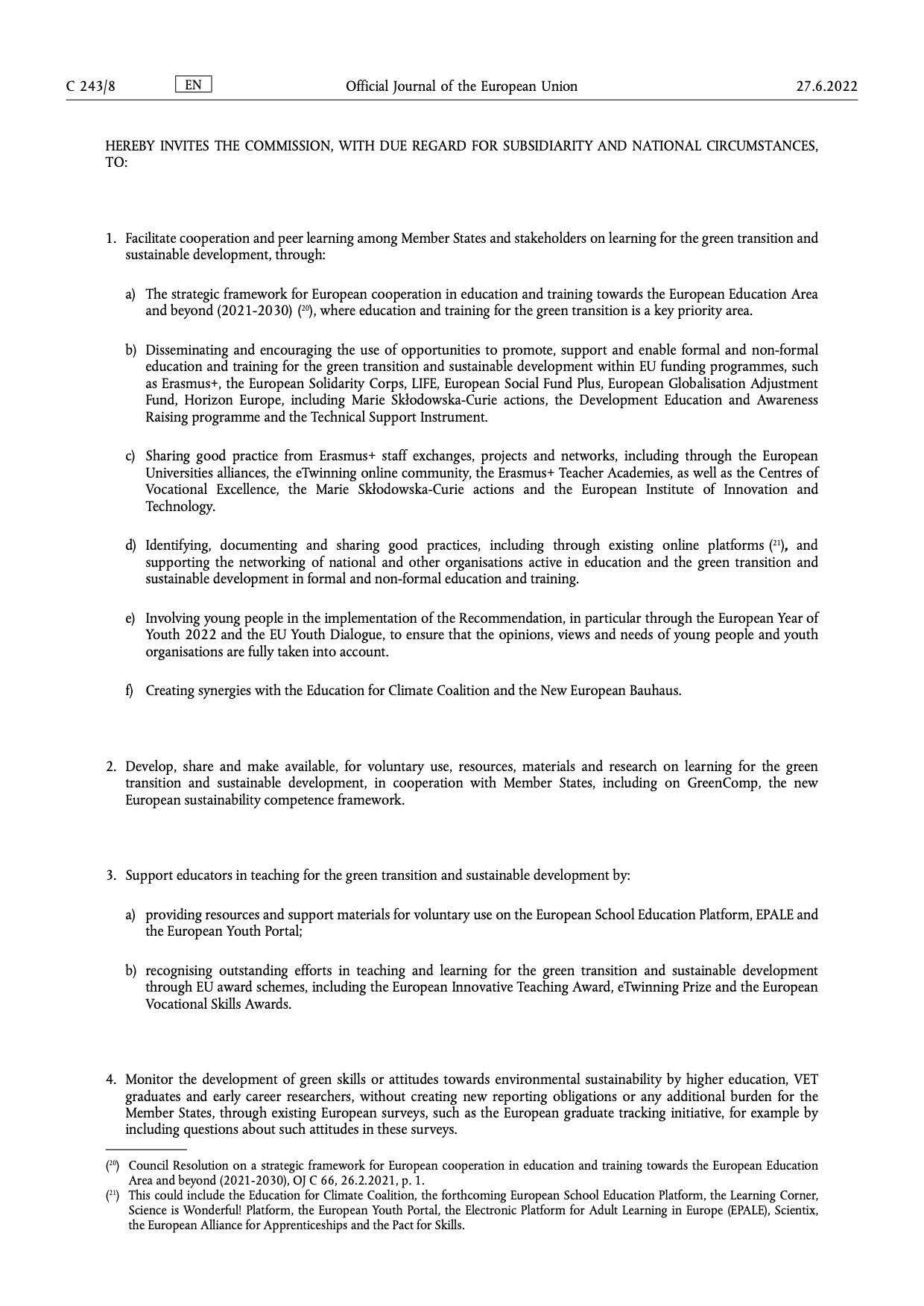As you might know, an important step towards strengthening Member States’ green education capacities was taken this summer.
On 16 June 2022, the Council of the European Union adopted a recommendation on learning for the green transition and sustainable development.
The text is a set of recommendations for all 27 EU Member States (and the European Commission) to support policies and programmes about that type of learning.
This was an important milestone.
Because if education remains a national competence, we all face the same challenge of global warming. We therefore need a common commitment and common goals.
As the text reads, we need to "Establish learning for the green transition and sustainable development as one of the priority areas in education and training policies and programmes in order to support and enable the sector to contribute to a sustainable future, embedded in a holistic understanding of education." (second recommendation to Member States)



But there is much more than that in this document.
The recommendation is a proper roadmap for Member States on supporting learning and teaching for the green transition in all phase of education and training, formal and informal. It is about investing, organising, planning sustainability learning and teaching.
It also goes into the detail of concrete proposals regarding pedagogy and ways of teaching and learning, such as: encouraging a gender-balanced participation of learners from all backgrounds, including those with fewer opportunities; empowering all learners to participate in and engage with decision-making at the level of their institution as well as their local and wider communities; providing learners with opportunities to understand, engage with and value the natural world and its biodiversity; create a sense of curiosity and wonder and learn to act for sustainability, individually and collectively; facilitating learning methods and approaches that are collaborative, experiential, practically oriented and relevant to local contexts and traditions and support interdisciplinary and cross-curricular activities. Etc.
Put simply, this recommendation tells us that we need education to adapt to the green transition induced by climate change, but this transition and the adaptation it requires is also an opportunity to change education.
Put even more simply: we need simultaneously education for the transition and transition in education.
Reading this recommendation and the interesting proposals it contains, something I warmly invite you to do, you will see how this is what is at stake. We must engage in a conversation about how to implement these proposals.
I also invite you to have a look at the Staff working document that accompanied the proposal for this Council recommendation. It comes in a form of a handbook and provides details and evidence, including results from the public consultation that was launched during the drafting phase.
Obviously, the Education for Climate Coalition is specifically mentioned in the recommendation as it is meant to be the place where exchange and innovation can take place.
So let's join forces and turn this recommendation into concrete action, into community challenges.
There is a lot to do, but this is the right time for it, and I can see around a huge appetite for it.
Are you in?


Can't agree more.